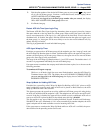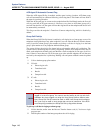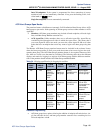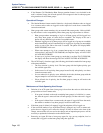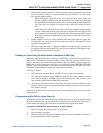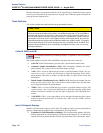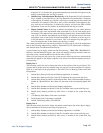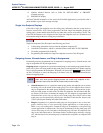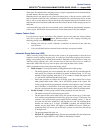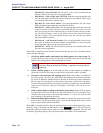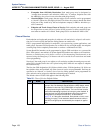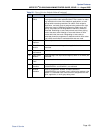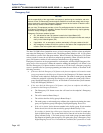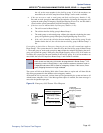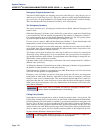
System Features
INTER-TEL
®
CS-5200/5400 ADMINISTRATOR GUIDE, ISSUE 1.1 – August 2005
Answer Feature Code
Page 155
When Inter-Tel endpoints have outgoing-access or ring-in assignments, the associated individ-
ual trunk buttons show the status of their trunks.
Endpoints that do not appear on any of the lists cannot place or directly receive outside calls;
they are limited to intercom calls, conferences, transferred calls, and retrieving calls on system
hold. A call on system hold can only be picked up at the endpoint that placed it on hold or at an
endpoint that has an individual trunk button and has allowed-answer and/or outgoing access for
that trunk.
A private trunk group with one or more trunks can be established by programming outgoing-
access, ring-in, and allowed-answer permission for the trunk group to only one endpoint.
Answer Feature Code
For calls that are ringing or holding at the endpoint, the user may enter the Answer feature
code (351) or press the button. When more than one call is ringing or holding, the
following priority list determines which call is answered first:
• Ringing calls (ring ins, recalls, callbacks, or transfers) are answered in the order they
were received.
• Calls on individual hold are answered in the order they were placed on hold.
Automatic Route Selection (ARS)
ARS is a money-saving feature that allows the system to be programmed to select the least
expensive route for placing outgoing calls. It can be used for placing outgoing calls and trans-
ferring or forwarding calls to outside phone numbers. Endpoints can be restricted to using only
ARS for placing outgoing calls. Also, because users do not have direct access to trunks on
other nodes, ARS is the only way users can place calls using the other nodes’ trunks.
ARS is programmed using route groups and facility groups.
• Route Groups: A route group contains dialing patterns and facility groups.
— The dialing patterns are used to determine the calls that will be routed through the
route group. For example, the default dial pattern for Route Group 1 is N+ (any
number of digits beginning with digit 2–9). If a number is dialed that begins with
1, it will not be routed through this route group.
— Each route group has an ordered list of facility groups that contains lists of local
trunk groups and/or nodes. There can be 100 facility groups in the system. The
facility groups should be programmed so that the least-expensive route is checked
and, if available, is selected first. If the least-expensive facility group is not avail-
able, the system checks the other groups in the list until it finds an available trunk.
• Facility Groups: A facility group contains trunk group/node lists and dial rules.
— The trunks can include local trunk groups or nodes.
— The dial rules tell the system what to dial. The system can have up to 32 dial rules,
26 of which are programmable. Each facility group can use up to 32 dial rules. For
example, if the selected route group requires that the number contain “1” but no
area code, the dial rules include the 1 and drop the area code. The modified phone
number can contain up to 32 digits. (If SMDR is enabled, the modified phone
number, not the digits dialed, will appear in the SMDR call record.) When pro-
gramming ARS, you can use preset dial rules or create new dial rules that add up
to 16 digits each.
— The preprogrammed dial rules are:
— Dial Rule #1 – Echo Equal Access: This non-programmable dial rule includes the
equal access digits (10XXX or 101XXXX) in the number, if dialed.
ANSWER



